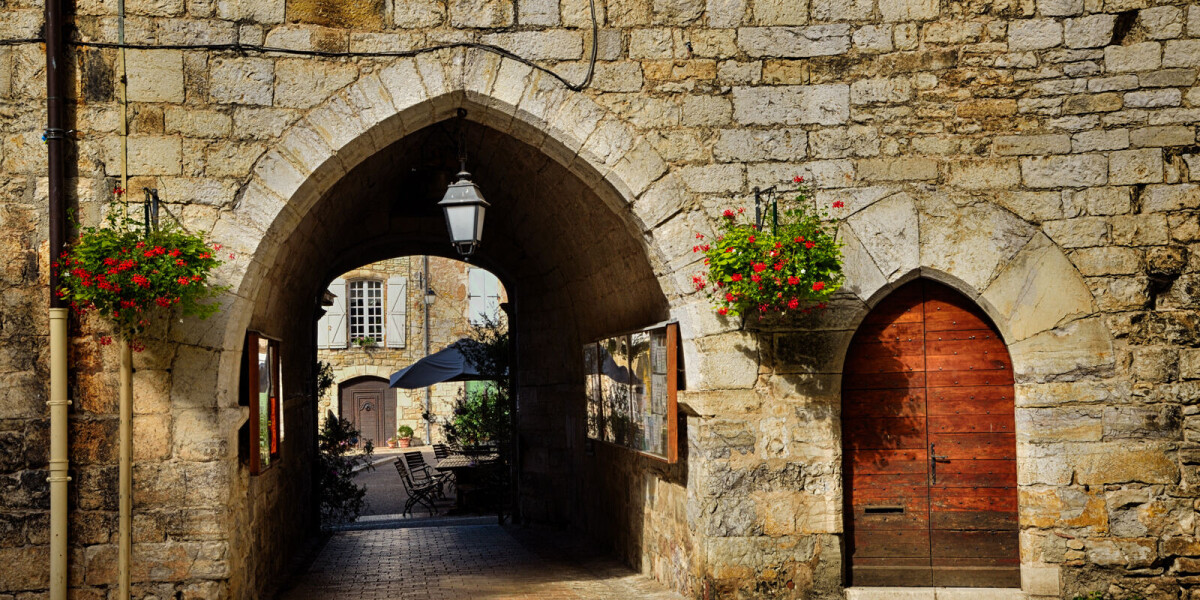
This small french town was refuge to english throne heir until death
- Select a language for the TTS:
- UK English Female
- UK English Male
- US English Female
- US English Male
- Australian Female
- Australian Male
- Language selected: (auto detect) - EN
Play all audios:

Martel is a small, picturesque town in the Lot department of south-west France, lying slightly north of the Dordogne river. Its narrow streets are filled with small boutiques, lively
terraces, and cafés, with the town being deemed a Ville d'art et d'histoire, in recognition of its medieval heritage and 'towering' stone silhouettes. TIES TO MEDIEVAL
ENGLISH ROYALTY Henri Court-Mantel, so called in French because of the short clothes he wore, was the eldest son of Henry II of England and Eleanor of Aquitaine, at a period when the English
monarch ruled over much of the south west of France. In English, he was called Henry the Young King, as he was crowned during his father’s reign, but he was never allowed to rule. He fell
out with his father, and began a rebellion against him and his brother, Richard the Lionheart. In a former Connexion interview (2021), the then official town guide, Brigitte Vidieu, said his
downfall came when he vandalised and pillaged the sanctuary of Rocamadour: Read also: Award-winning French medieval village is home to a famous son “This was in revenge against his father,
as Henry II had made pilgrimages there and given valuable treasures. As Henri Court-Mantel left, legend has it that the bell rang out, as a sign from God. The rebellious son fell ill and
took refuge in Martel.” It is said he asked for forgiveness. His father sent a messenger with his pardon, who found him lying on a bed of cinders as an act of penitence with a heavy wooden
cross on his chest. He died on June 11, 1183, aged 28 in Maison Fabri, which can still be visited by the public. There is a commemorative plaque on the house and a rampant leopard from the
English coat of arms at the top of its tower. A TOWN OF TOWERS Martel is called the city of the seven towers, even though there are more than that in reality. “In the Middle Ages, Martel
was ruled by the Viscount of Turenne. It was wealthy, as it was on an important trading route for salt. The precious commodity was brought up the river Dordogne from the Atlantic to the port
of Souillac, and then transported to Martel," said Ms Vidieu. “In the 13th Century the rich merchants built towers as a sign of their new-found wealth. One day, the Viscount of Turenne
visited the town, and impressed by the towers, named seven of them after each of his children,” she added. By the 17th Century, Ms Vidieu says there were fewer merchants, as they had
encouraged their children to pursue other professional careers, such as law, which gave them a higher standing in society, but less wealth, and Souillac began to sell as well as import salt.
RIDE THE TOURIST 'TRUFFLE' TRAIN Visitors can travel via train à vapeur (steam train) from Martel to Saint-Denis. It is a 13km round trip on the edge of a cliff, offering some
incredible views over the Haut-Quercy countryside. The service is set to reopen on April 1, 2025. The railway is known locally as the Truffadou, named after the truffles for which Martel
was once famous. It was always an area rich in truffles and when the train arrived in the 19th Century, Martel, once again profited from flourishing trade, as it could now sell its” black
diamonds”, throughout France: “This ended with World War I when locals did not have time to look after their truffle plantations. In the 1980s, an experimental truffle station was created
nearby and now this valuable local culture is once again exploited successfully,” said Ms Vidieu. MARTEL'S LAVENDAR FESTIVAL Another crop, which is also coming back into fashion, is
lavender. At the beginning of the 20th Century, lavender was in high demand for the developing soap industry. Read also: Follow your nose on a scent-sational tour of France’s spring
flowers "Martel was unusual because in the 1920s it had its own distillery and was the local lavender capital," said Ms Vidieu. The cultivation of this perfumed purple plant
reached its peak in the 1950s and 1960s. It is through that were up to 200 lavender farms in Martel and the Causse, accounting for 10% of national production of lavender essential oils. As
soap became industrialised, demand faded, but Martel keeps the tradition blooming by hosting the annual Fête de la Lavande (lavender festival). It has taken place at the end of June since
2018 and has seen an increasing number of lavender producers setting up in the region. Read also: Love of labyrinths: Crop mazes are growing activity trend in France
